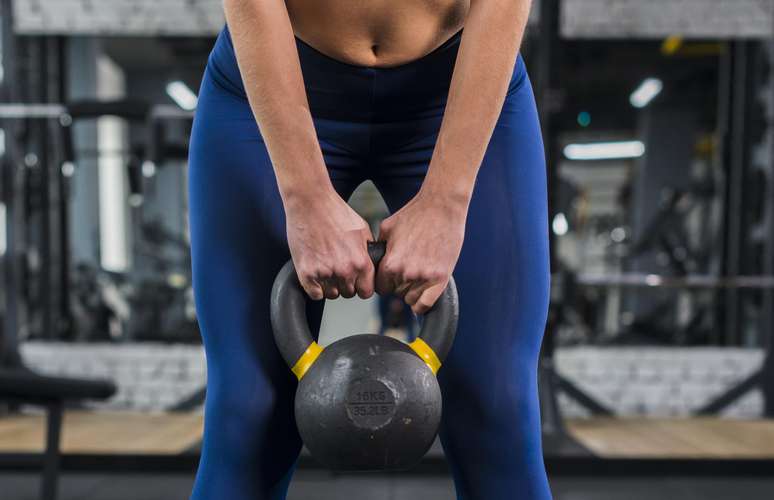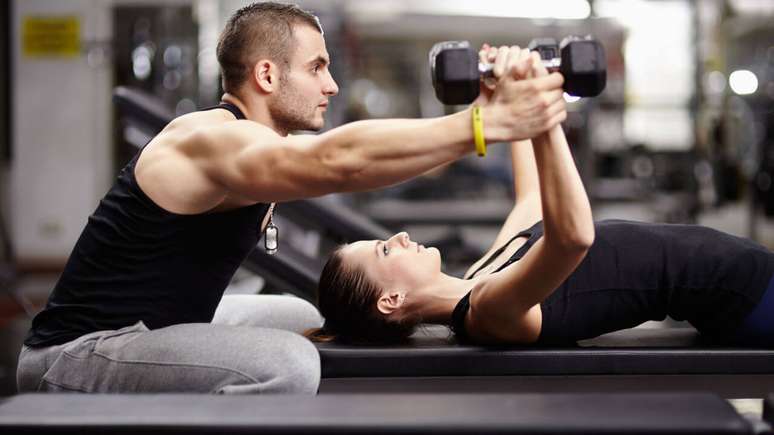To ensure good results, you must first learn how to perform the movement correctly. Find out how to do it and how to avoid the most common mistakes
Bet on kettlebell squats can take leg training to another level. This is because, unlike using a bar, this accessory tends to be more comfortable for many people, optimizing the execution of the movement and, consequently, the benefits it offers.
Second Amanda Huddock Hoffmancertified personal trainer and kettlebell specialist, the compact format of this type of weight still typically means that you can lift more weight during exercises, as well as allowing for deeper squats – two factors that can make a big difference to your workout results.
To use the kettlebell, however, you need to know some important things before you get into action, such as the movement step by step, how to include it in your training routine and how to avoid the most common execution mistakes. Below you can check out all this information!
Which muscles do kettlebell squats work?
Kettlebell squats engage muscles throughout the body, but especially the quads and glutes, like any other type of squat. The kettlebell, however, targets additional muscles. “As you hold the weight, you’re also working your back, arms, and shoulders,” Amanda explains. It also engages your core to keep your body upright.
How to Do Kettlebell Squats
Even if you have already mastered the free squat movement, adding weight can make a big difference. Therefore, you also need to learn how to vary it using the kettlebell. In the following video, you can watch it step by step:
How to Add Kettlebell Squats to Your Workout
Beginners: If you’re just starting out with exercise, Amanda Hudock Hoffman suggests adding kettlebell squats once a week.
Intermediary: If you are more experienced (for example, you have been training for at least six months), go ahead and do it up to twice a week.
All levels: You shouldn’t hold off on this move until the end of your workout if your goal is to work a little harder or build a good base, Amanda says. “If you do 30 minutes of cardio and then do squats, you’re going to get tired,” she says. But be sure to warm up first, activating the muscles and joints you’ll be using with moves like squats and bodyweight planks, for example.
Common Kettlebell Squat Mistakes
There are some mistakes that the personal trainer claims are the most common. Below, he explains what they are and how to avoid them.
- You lean too far forward
“When you squat, think of your torso almost like an elevator,” Hoffman says. “It goes up and down, but it doesn’t move from side to side.” The goal of squats, he explains, is to work your quads and glutes. When you bend forward, you take some of the work off your quads, which can also stress your lower back and potentially cause pain.
To avoid this, the professional suggests elevating your heels, making sure that both feet are supported equally. To do this, you can rest your heels, for example, on weight plates or even on recipe books and textbooks. But if you really want to invest in your workout, you can buy squat wedges.
- Your knees are not in the right place
If your knees open or close too much, you can injure your joints. Amanda explains that this often happens because of a lack of strength. In this case, she recommends starting with just your body weight and also using your hands to pull your knees or press them so they are in line with your second or third toe, if necessary.
- Your feet are dangling
“Your shoes could be the problem,” says the personal trainer. To avoid this problem, he recommends doing squats without shoes or in low-soled sneakers.
Source: Terra
Ben Stock is a lifestyle journalist and author at Gossipify. He writes about topics such as health, wellness, travel, food and home decor. He provides practical advice and inspiration to improve well-being, keeps readers up to date with latest lifestyle news and trends, known for his engaging writing style, in-depth analysis and unique perspectives.





![A more beautiful life in advance [SPOILERS] A more beautiful life in advance [SPOILERS]](https://fr.web.img2.acsta.net/img/90/2d/902d777a1341c7bc0507675575d75b53.jpg)


